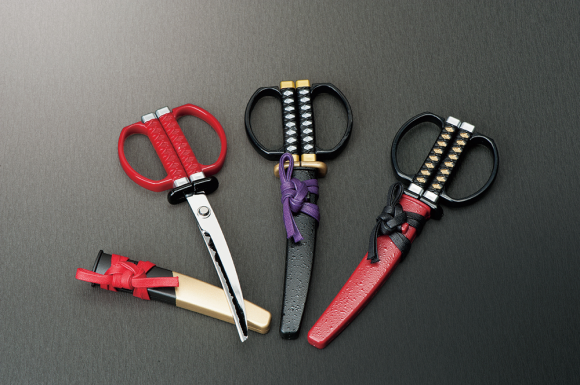
Merciless warlords and noble reformers serve as inspiration.
The town of Seki, in central Japan’s Gifu Prefecture, was once Japan’s most prestigious swordsmithing center. Actually, that’s an honor it can still claim today, but the sword industry isn’t exactly what it used to be, and so Seki’s craftsmen have diversified by taking the skills and pride passed on from their forbearers and using them to produce the kinds of blades for which demand stays steady even in our modern, non-feudal era.
And so Seki’s workshops now also churn out kitchen knives, shaving razors, and nail clippers. They also make scissors, and one company, Seki’s Nikken Cutlery, wants to combine its modern products with some of the town’s cultural heritage, which leads us to its line of Great Katana Scissors.
This isn’t Nikken’s first time to create practical-use edged instruments with samurai inspirations, but the new batch of four models is its most expansive yet. Three pairs of scissors are modeled after the personal katana of prominent daimyo warlords, starting with Oda Nobunaga’s Heshikiri Haseba, which he is said to have used to kill a servant who displeased him with a strike so heavy and violent that it was as much a crushing blow as a cutting slice.
Next is Date Masamune’s Shokudaikiri Mitsutada, said to have sliced through a bronze candleholder that the target of the northern warlord’s attack no doubt hoped would have been more effective at stopping what turned out to be a killing strike.
Mitsunokami Yoshiyuki, the sword of 19th-century samurai scholar and political reformer Sakamoto Ryoma, is an outlier in the group, seeing as how Ryoma lived some 200 years after the end of the Sengoku period that Nobunaga and Masamune were swinging their swords around in. Nevertheless, Ryoma remains one of the most widely respected and admired figures in Japanese history, and the scissors based on his sword carry the same quiet but firm dignity that Ryoma projects in his portraits.
The three above pairs of scissors are all identically priced at 3,800 yen (US$35), which includes their scabbards and display stands. For those desiring something even more stately, Nikken is also producing a limited batch of 100 paris of scissors based on Namazu Otoshiro, named for its resemblance to the curved, sinuous tail of a catfish.
The owner of Namazu Otoshiro was Tokugawa Ieyasu, whose eventual dominance over the other Sengoku period began the Tokugawa shogunate, which would go on to rule Japan for roughly three centuries during what came to be called the Edo period. The Namazu Otoshiro scissors’ handle and scabbard come treated in Echizen lacquer, applied by skilled artisans in Fukui Prefecture, and are priced at 15,000 yen, in accordance with their higher quality materials and exalted status.
Nikken is not selling the scissors through regular shops or online retailers, but instead as part of a crowdfunding campaign here on website Mirai Shopping. However, since the project has already exceeded its goal, and has 48 days left, pledging funds is now essentially the same as just buying them outright.
Source, images: @Press
[ Read in Japanese ]

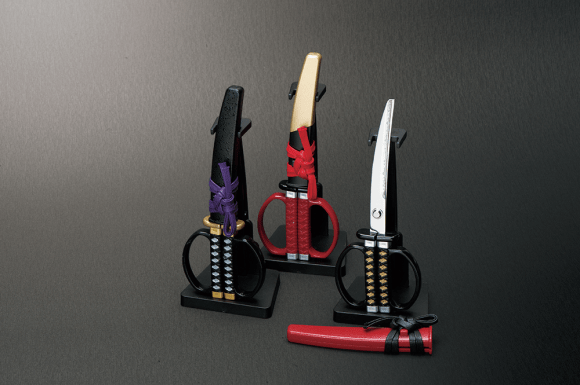

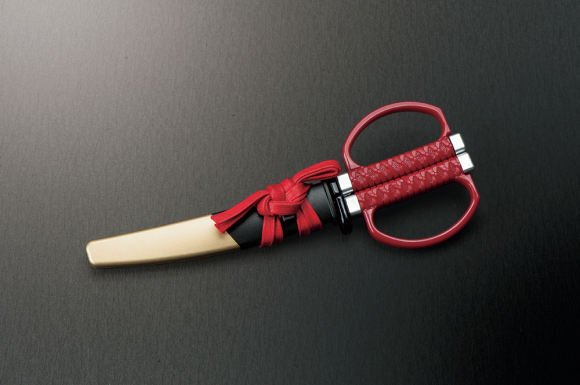
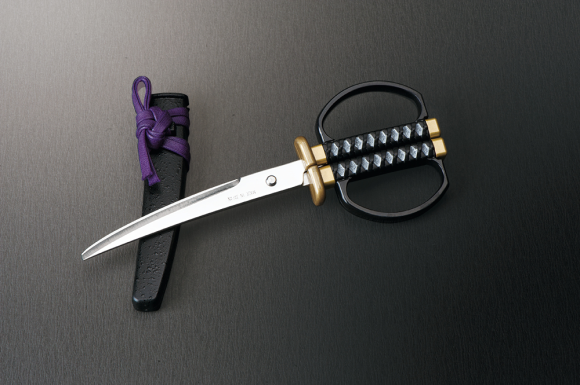
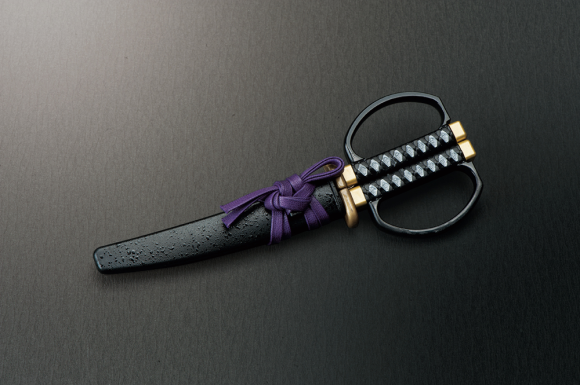

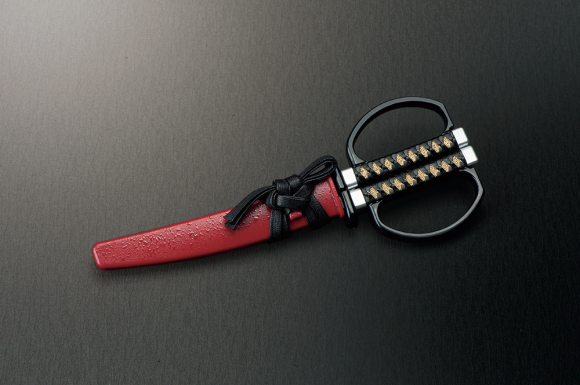
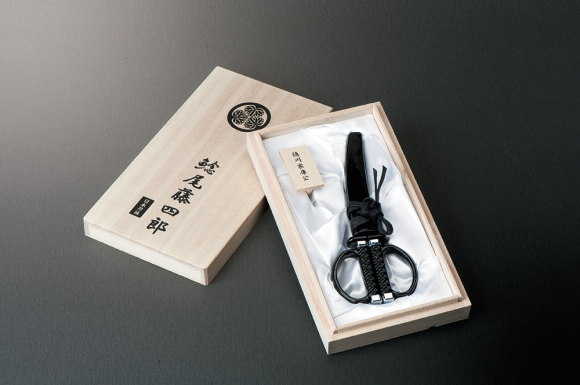
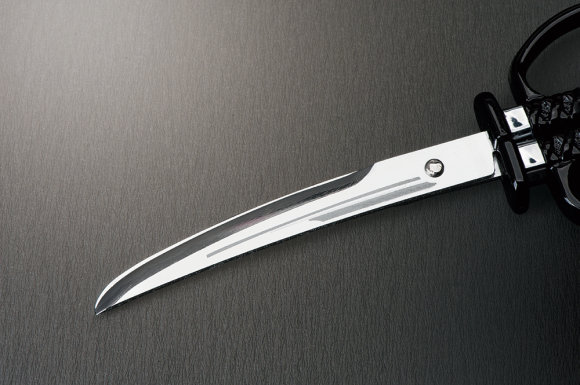
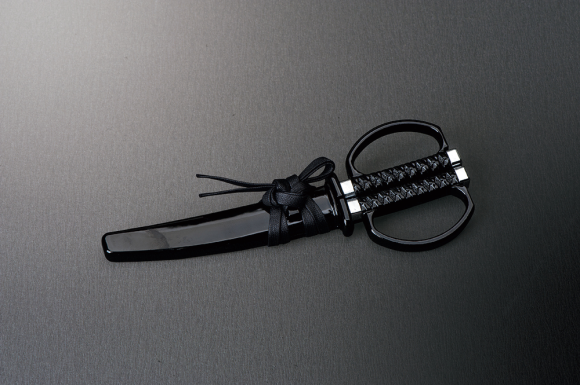
 Swords of famous samurai reborn as beautiful kitchen knives from Japan’s number-one katana town
Swords of famous samurai reborn as beautiful kitchen knives from Japan’s number-one katana town One Piece anime katanas recreated as exquisite letter openers by Japan’s swordsmith legacy heirs
One Piece anime katanas recreated as exquisite letter openers by Japan’s swordsmith legacy heirs Mini samurai sword scissors are here to help you slice paper and plastic foes to pieces【Photos】
Mini samurai sword scissors are here to help you slice paper and plastic foes to pieces【Photos】 Samurai sword hunt begins as storm washes away blacksmith’s warehouse in Gifu Prefecture
Samurai sword hunt begins as storm washes away blacksmith’s warehouse in Gifu Prefecture Real-life Rurouni Kenshin katana forged based on sword of series’ most merciless villain【Photos】
Real-life Rurouni Kenshin katana forged based on sword of series’ most merciless villain【Photos】 Foreign English teachers in Japan pick their favorite Japanese-language phrases【Survey】
Foreign English teachers in Japan pick their favorite Japanese-language phrases【Survey】 Randomly running into a great sushi lunch like this is one of the best things about eating in Tokyo
Randomly running into a great sushi lunch like this is one of the best things about eating in Tokyo Beautiful new Final Fantasy T-shirt collection on the way from Uniqlo【Photos】
Beautiful new Final Fantasy T-shirt collection on the way from Uniqlo【Photos】 Disney princesses get official manga makeovers for Manga Princess Cafe opening in Tokyo
Disney princesses get official manga makeovers for Manga Princess Cafe opening in Tokyo Kyushu-exclusive Black Mont Blanc goes nationwide in a “Special” way
Kyushu-exclusive Black Mont Blanc goes nationwide in a “Special” way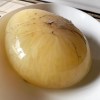 You COULD eat a terrifying octopus egg in Japan, but SHOULD you? Let’s find out!【Taste test】
You COULD eat a terrifying octopus egg in Japan, but SHOULD you? Let’s find out!【Taste test】 Hey, Japanese taxi driver! Take us to your favorite restaurant in Tsuruga City!
Hey, Japanese taxi driver! Take us to your favorite restaurant in Tsuruga City! Shopping at Japanese convenience store Lawson? Don’t forget to take a cooking pot with you!
Shopping at Japanese convenience store Lawson? Don’t forget to take a cooking pot with you! Yokohama restaurant serves fried axolotl, along with giant isopod, camel, and crocodile
Yokohama restaurant serves fried axolotl, along with giant isopod, camel, and crocodile Starbucks releases a special sparkly tumbler in Japan to support diversity
Starbucks releases a special sparkly tumbler in Japan to support diversity We try out “Chan Ramen”, an underground type of ramen popular in the ramen community
We try out “Chan Ramen”, an underground type of ramen popular in the ramen community New Studio Ghibli bedding sets are cool in all senses of the word
New Studio Ghibli bedding sets are cool in all senses of the word Our Japanese reporter visits Costco in the U.S., finds super American and very Japanese things
Our Japanese reporter visits Costco in the U.S., finds super American and very Japanese things New Pokémon cakes let you eat your way through Pikachu and all the Eevee evolutions
New Pokémon cakes let you eat your way through Pikachu and all the Eevee evolutions There’s a park inside Japan where you can also see Japan inside the park
There’s a park inside Japan where you can also see Japan inside the park Japanese convenience store packs a whole bento into an onigiri rice ball
Japanese convenience store packs a whole bento into an onigiri rice ball Hanton rice — a delicious regional food even most Japanese people don’t know about, but more should
Hanton rice — a delicious regional food even most Japanese people don’t know about, but more should Final Fantasy, Kingdom Hearts, and Dragon Quest pet product line announced by Square Enix
Final Fantasy, Kingdom Hearts, and Dragon Quest pet product line announced by Square Enix Studio Ghibli releases Kiki’s Delivery Service chocolate cake pouches in Japan
Studio Ghibli releases Kiki’s Delivery Service chocolate cake pouches in Japan Japan’s bone-breaking and record-breaking roller coaster is permanently shutting down
Japan’s bone-breaking and record-breaking roller coaster is permanently shutting down New definition of “Japanese whiskey” goes into effect to prevent fakes from fooling overseas buyers
New definition of “Japanese whiskey” goes into effect to prevent fakes from fooling overseas buyers Foreign passenger shoves conductor on one of the last full runs for Japan’s Thunderbird train
Foreign passenger shoves conductor on one of the last full runs for Japan’s Thunderbird train Kyoto bans tourists from geisha alleys in Gion, with fines for those who don’t follow rules
Kyoto bans tourists from geisha alleys in Gion, with fines for those who don’t follow rules Studio Ghibli unveils Mother’s Day gift set that captures the love in My Neighbour Totoro
Studio Ghibli unveils Mother’s Day gift set that captures the love in My Neighbour Totoro Domino’s Japan now sells…pizza ears?
Domino’s Japan now sells…pizza ears? Toyota built a life-sized Miraidon Pokémon and are letting people test drive it this weekend
Toyota built a life-sized Miraidon Pokémon and are letting people test drive it this weekend New Japanese KitKat flavour stars Sanrio characters, including Hello Kitty
New Japanese KitKat flavour stars Sanrio characters, including Hello Kitty Sales of Japan’s most convenient train ticket/shopping payment cards suspended indefinitely
Sales of Japan’s most convenient train ticket/shopping payment cards suspended indefinitely Sold-out Studio Ghibli desktop humidifiers are back so Totoro can help you through the dry season
Sold-out Studio Ghibli desktop humidifiers are back so Totoro can help you through the dry season Japanese government to make first change to romanization spelling rules since the 1950s
Japanese government to make first change to romanization spelling rules since the 1950s Ghibli founders Toshio Suzuki and Hayao Miyazaki contribute to Japanese whisky Totoro label design
Ghibli founders Toshio Suzuki and Hayao Miyazaki contribute to Japanese whisky Totoro label design Doraemon found buried at sea as scene from 1993 anime becomes real life【Photos】
Doraemon found buried at sea as scene from 1993 anime becomes real life【Photos】 Tokyo’s most famous Starbucks is closed
Tokyo’s most famous Starbucks is closed One Piece characters’ nationalities revealed, but fans have mixed opinions
One Piece characters’ nationalities revealed, but fans have mixed opinions We asked a Uniqlo employee what four things we should buy and their suggestions didn’t disappoint
We asked a Uniqlo employee what four things we should buy and their suggestions didn’t disappoint Princesses, fruits, and blacksmiths: Study reveals the 30 most unusual family names in Japan
Princesses, fruits, and blacksmiths: Study reveals the 30 most unusual family names in Japan Studio Ghibli’s new desktop Howl’s Moving Castle will take your stationery on an adventure
Studio Ghibli’s new desktop Howl’s Moving Castle will take your stationery on an adventure Japanese city famous for its production of swords and knives now has katana-shaped ice cream
Japanese city famous for its production of swords and knives now has katana-shaped ice cream Tokyo’s new samurai photo studio sends you to Japan’s feudal era with awesome digital backdrops
Tokyo’s new samurai photo studio sends you to Japan’s feudal era with awesome digital backdrops Samurai cats look awesome, teach us about Japanese history and culture at the same time
Samurai cats look awesome, teach us about Japanese history and culture at the same time These new samurai sword scissors are gorgeous and we want them now!
These new samurai sword scissors are gorgeous and we want them now! Real-life Rurouni Kenshin reverse-blade katana, forged by master swordsmith, now on display【Pics】
Real-life Rurouni Kenshin reverse-blade katana, forged by master swordsmith, now on display【Pics】 Samurai armor and mini katana tableware is here to keep your bottles safe and your food stabbed
Samurai armor and mini katana tableware is here to keep your bottles safe and your food stabbed Impress your Japanese history professor with this T-shirt
Impress your Japanese history professor with this T-shirt Real-life Rurouni Kenshin reverse-blade sword to be displayed in Tokyo
Real-life Rurouni Kenshin reverse-blade sword to be displayed in Tokyo Fight like a ninja in a samurai town, with sword-fighting experience at Kyoto Toei movie studio park
Fight like a ninja in a samurai town, with sword-fighting experience at Kyoto Toei movie studio park Dojigiri, the millennium-old katana said to have slain a demon, is now on display in Tokyo【Pics】
Dojigiri, the millennium-old katana said to have slain a demon, is now on display in Tokyo【Pics】 Katana coasters! Samurai sword tableware brings bushido to your home
Katana coasters! Samurai sword tableware brings bushido to your home Amazing exhibition of Japan’s legendary “cursed katana” is going on right now【Photos】
Amazing exhibition of Japan’s legendary “cursed katana” is going on right now【Photos】 People in some parts of Japan now legally allowed to smile for their driver’s license photos
People in some parts of Japan now legally allowed to smile for their driver’s license photos Japanese samurai sword ice cream crafted by master swordsmith from famous katana town of Seki
Japanese samurai sword ice cream crafted by master swordsmith from famous katana town of Seki Cosplay-friendly interior design — Japanese cosplayer shows off crazy apartment entryway
Cosplay-friendly interior design — Japanese cosplayer shows off crazy apartment entryway
Leave a Reply